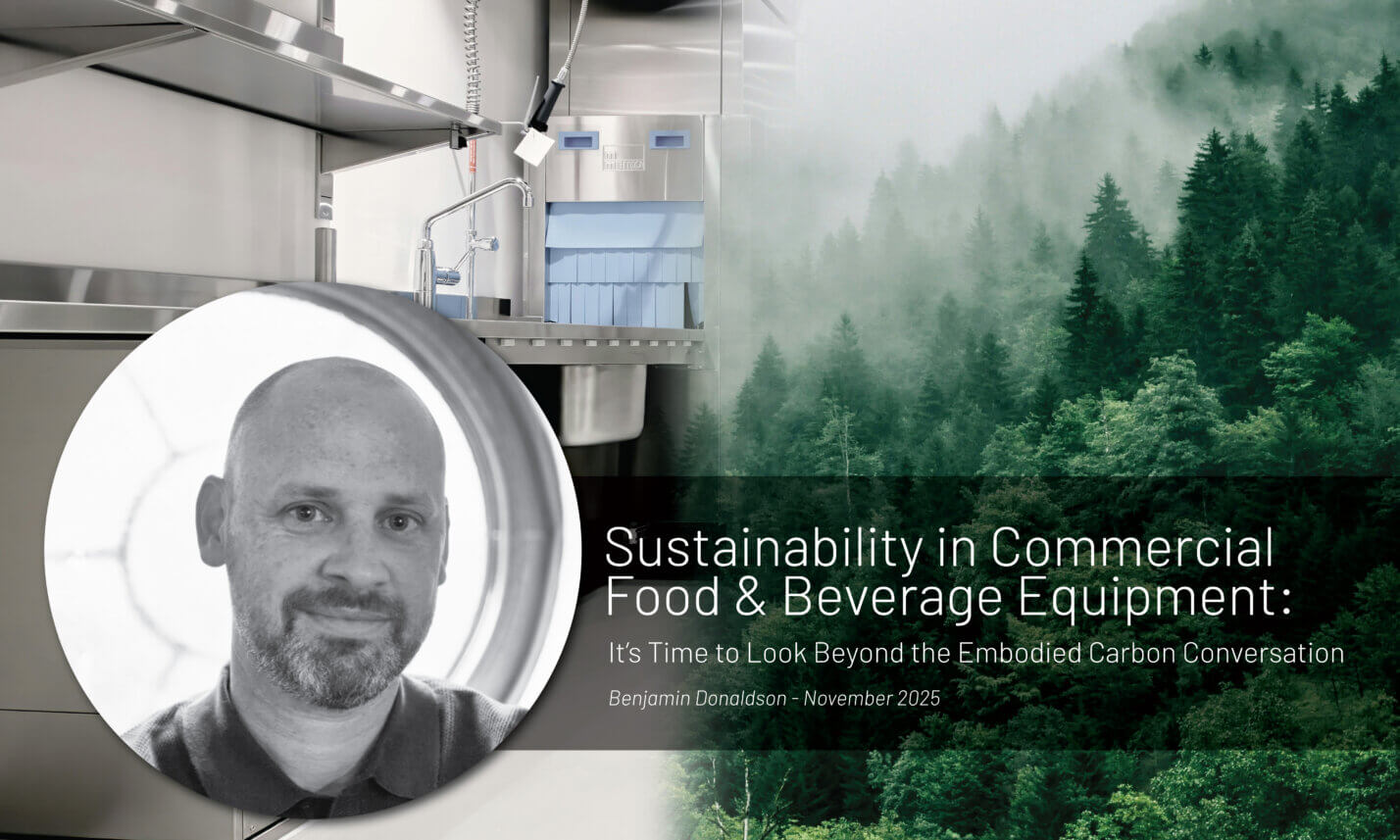At MYA, we’ve been watching the sustainability conversation in the commercial food and beverage equipment sector evolve; often from a distance, observing positive signs but also clear gaps. The industry is discussing carbon reduction, environmental responsibility, and the future of equipment design more than ever before.
So, it’s time we moved from conversation to action.
As consultants working across supply chains, operators, and manufacturers, we see both the ambition and the barriers firsthand. And one thing is quite clear: our approach needs to broaden if we’re to drive genuine progress.
Sustainability in Commercial Food & Beverage Equipment: It’s Time to Look Beyond the Embodied Carbon Conversation
As sustainability expectations rise across the commercial food and beverage equipment industry, we’ve seen an encouraging shift: manufacturers, operators, and specifiers are increasingly talking about embodied carbon and the environmental impact of the materials and processes that bring equipment to life.
This is progress — but it’s also only part of the story.
Embodied Carbon Matters, but It Isn’t the Whole Picture
Focusing solely on embodied carbon risks oversimplifying the challenge. Yes, we should continue improving material choices, manufacturing efficiency, and logistics. But commercial equipment is uniquely operationally intensive. Over its lifetime, a single piece of cooking, ware washing or refrigeration equipment can consume vast amounts of energy and water compared to what was used to actually build it.
A unit with low embodied carbon but poor operational efficiency is not necessarily sustainable.
Whole Life-Cycle Thinking Is Essential
To make meaningful, industry-wide progress, we must evaluate equipment through a full life-cycle lens, including:
- Raw materials & manufacturing
- Distribution & installation
- Operational performance
- Longevity & durability
- End-of-life & supply chain circularity
Each stage influences the total environmental footprint. Whole-life evaluations give us the clearest picture and the most honest pathway to reducing emissions.
End of Supply Chain: The Missing Link
End-of-life treatment remains an under-addressed segment of our industry. Commercial foodservice equipment contains metals, electronics, plastics, refrigerants, and insulated components — all of which carry both carbon value and environmental risk.
If we’re serious about sustainability, we must prioritise:
- Designing for disassembly
- Increasing components’ reusability
- Expanding repair pathways
- Strengthening recovery and recycling infrastructure
- Developing supply-chain partnerships for responsible equipment return
Circularity isn’t a trend; it’s a requirement for any credible sustainability strategy.
The Opportunity Ahead
By moving from an embodied carbon conversation to a whole life-cycle conversation, the industry can:
- Build more accurate sustainability metrics
- Deliver more efficient, lower-cost operations
- Support regulatory and market expectations
- Demonstrate genuine environmental leadership
The food and beverage equipment sector has enormous potential to shape a more sustainable future. But we’ll only do that if we look beyond the starting point; and consider every stage of an equipment’s life, right through to the very end of the supply chain.
